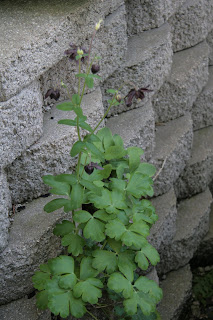Yes, that's right. I still have flowers blooming! For those of you who would doubt the claim, I have photographic proof. I snapped these shots about 20 minutes ago. It's unseasonably warm (60 in the sun) here. You won't catch me complaining!
These petunias were the deal of the century. Lowe's had them marked down to 25 cents per basket! I was willing to pay up to a dollar a piece, seeing as how it was the weekend before Thanksgiving, so imagine my surprise when they were a fourth of the cost! I'm sure people thought I was a loon, buying plants so late in the season, but there was no forecast of frost that week, and I wanted to gussy up the porch for my house guests that would be arriving Thanksgiving Day. We had fantastic weather on turkey day and everyone got to go outside and get a glimpse of these pretty flowers up close. I think we had a frost this week, but they must have gotten protection from the house. I'll take the blooms as long as I can get them!
I got these pansies from Lowe's just a markdown away from their final clearance. I paid $3.00 for a gallon container of red and yellow, which I split between two large pots on my front porch. And I paid $3.00 for a flat of "vining" two-tone purple pansies. I feel a little taken though, because when I went back right before Thanksgiving, they were all down to 10 cents per pot and 25 cents a flat.
I can't resist a good deal. Since I didn't need any, I picked up a flat for my mom. I don't know if she's put them in or not, but if she did, she's guaranteed a winter's worth of good color and then another flush in spring.
The pansies I put by the street in September are still going great guns. I've been so pleased with them that I have decided they'll be part of my annual fall planting.




























